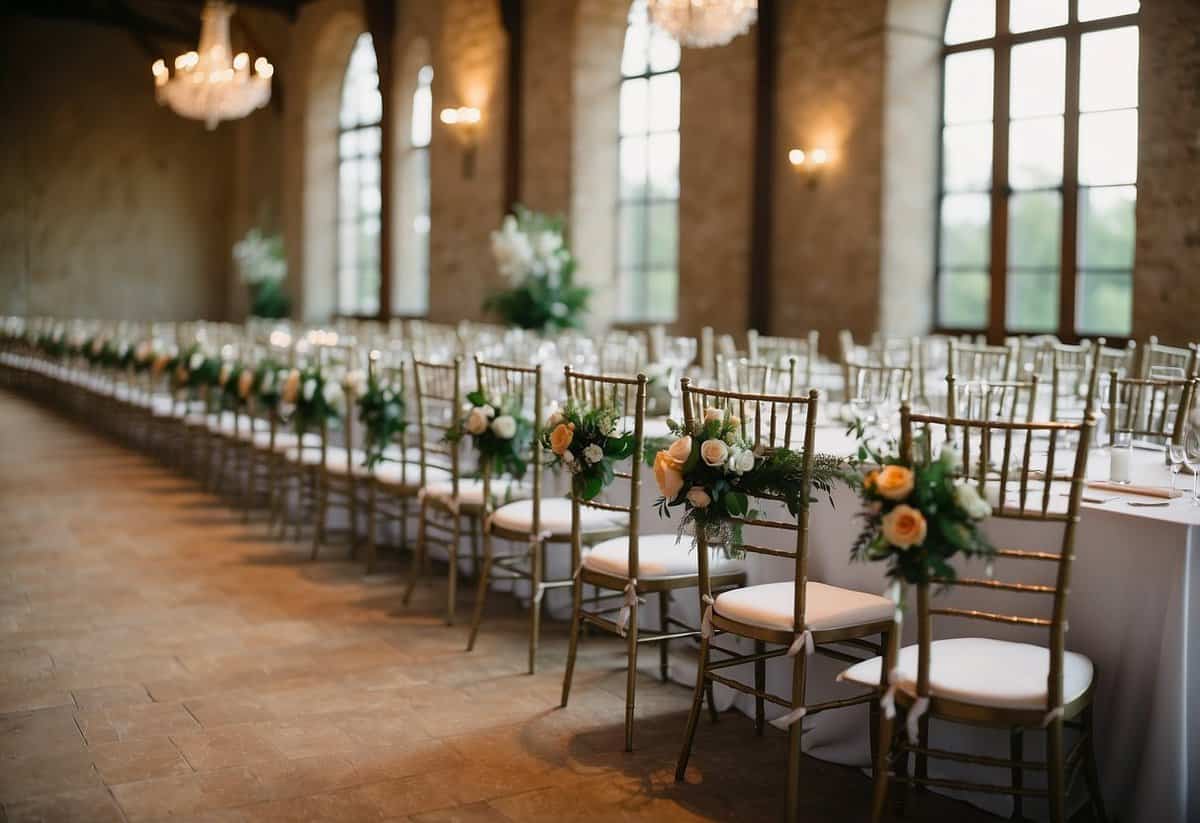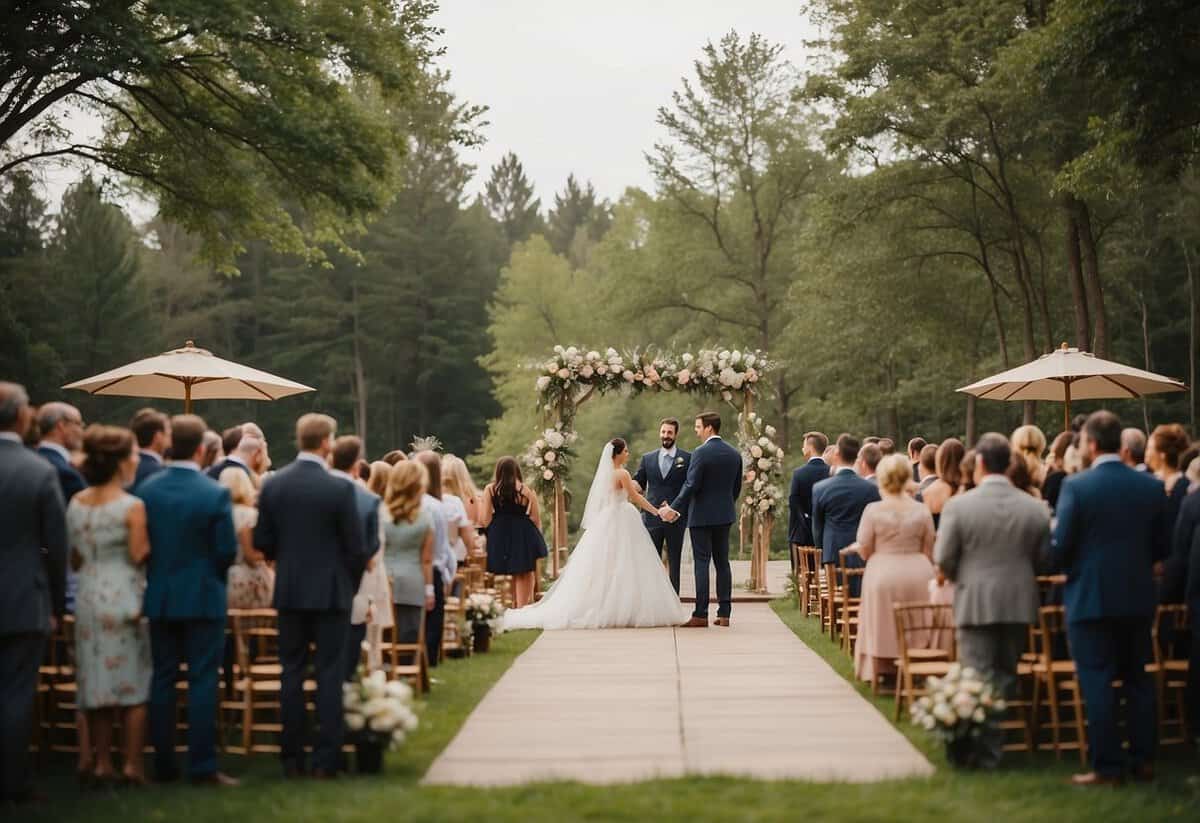How Many Guests Should I Expect at My Wedding? Tips for Planning the Perfect Guest List
Planning a wedding is an exciting yet daunting task, especially when it comes to deciding how many people to invite. Getting a handle on your guest list can ease a lot of wedding planning stress. On average, you can expect about 75-85% of your invited guests to attend your wedding. This means if you send out 100 invitations, around 75 to 85 guests will likely show up.

Several factors can affect your guest count. For example, local guests tend to have higher attendance rates compared to those living far away. For a large wedding, you might find that fewer people show up compared to a more intimate affair. By understanding these trends, you can better plan your wedding size and budget.
Sending out your save the dates six to eight months in advance can significantly increase attendance. This gives your guests ample time to prepare and make arrangements to join you on your special day. Whether you’re aiming for a large celebration or a cozy gathering, knowing these details can help you make more informed decisions.
Understanding Guest List Basics

Planning your wedding guest list involves defining the size of your wedding and organizing your guests into different priority lists. These steps can help ensure that you get the most important people there while staying within your venue’s capacity.
Defining Your Wedding Size
Your wedding size depends on how many people you want to invite and your venue’s capacity. Small weddings usually have 50 or fewer guests, while large weddings can have over 150 guests. Think about the number of people you want to celebrate this special day with, such as close family members, friends, and colleagues.
One useful tip is to make lists with the following numbers in mind:
- Venue Capacity: How many guests can your venue accommodate?
- Must-Invite Guests: These are close family members and best friends.
- Potential Guests: Friends or relatives you’d like to include if space and budget allow.
A good starting point is knowing that around 75-85% of those invited typically attend the wedding.
Creating A, B, and D Lists
The A, B, and D lists help prioritize who you invite to your wedding. The A list includes close family members and friends who you absolutely want to be there. These are the first invitations you send out.
For the B list, consider guests whom you’d like to have but aren’t essential. Send them invites if your A list guests decline. The D list includes distant relatives, work acquaintances, or friends you’re not as close to, filling in only if there’s extra room.
This system helps manage your guest list and ensures that those most important to you have the best chance of attending your big day.
Financial Considerations

Planning your guest list has a big impact on your wedding budget. You need to balance between inviting everyone and keeping costs manageable.
Budgeting for Your Guest Count
When determining your wedding budget, start with your guest count. Each guest adds to your expenses, like catering, wedding favors, and programs. For instance, if you’re having 100 guests, you can expect about 85 to 90 people to attend according to Zola’s Expert Advice.
Catering is often the largest expense. Most caterers charge per person, making this a simple way to estimate costs. Multiply the per-person cost by your expected attendance.
Other expenses like wedding favors and printed programs also scale with your guest count. For example, if wedding favors cost $5 each, then 100 guests would add $500 to your wedding budget. Be mindful of the total costs and adjust your guest list or budget accordingly.
Allocating Funds for Different Wedding Sizes
Small weddings tend to have a higher per-person cost. With fewer guests, you might opt for more personalized elements like gourmet meals or custom favors. For example, a wedding with 50 guests might afford higher-quality meals without exceeding budget.
Larger weddings can benefit from bulk discounts. However, keep in mind that larger weddings often come with additional expenses, such as a larger venue and more extensive decor. According to Riley Strong, big weddings may end up with a lower attendance rate, but you should still plan for the invited count to manage unexpected numbers.
Balancing these factors helps to allocate funds efficiently. Create a flexible budget that can accommodate shifts in your guest list size while ensuring that the critical elements of your day remain prioritized.
Venue and Location

Choosing the right venue and deciding between a local or destination wedding play crucial roles in determining how many guests will attend. Here are some key points to consider for both options.
Choosing the Right Venue
The type of venue you choose can greatly affect guest attendance. If your wedding is at a popular or easily accessible venue, more local guests will likely attend. Consider capacity, amenities, and accessibility. A venue that’s too small may limit your guest list, while one that’s too large may feel empty if turnout is lower than expected.
Some venues offer packages that include everything from catering to decorations. These can save time and money, but you need to ensure the venue matches your vision and accommodates your guest count. Think about logistics like parking, lodging, and travel for your guests.
Make sure the venue is booked well in advance. Popular venues fill up fast, so securing your spot early can increase the likelihood that your important guests can attend.
Local vs. Destination Wedding Considerations
Deciding between a local and a destination wedding will impact how many guests can attend. Local weddings usually have higher attendance rates because it’s easier for guests to get there. You can expect around 85% of local guests to attend.
A destination wedding typically has a lower attendance rate. Only about 35% of destination wedding guests usually make it. This is due to the higher costs and time involved for your guests. Destination weddings can be more intimate and may be easier to manage due to the smaller size.
For both options, communicate early. Sending save-the-dates six to eight months in advance can give your guests enough time to plan, increasing your overall attendance. Consider all aspects such as travel, accommodations, and activities available at the chosen location.
RSVPs and Attendance Estimations

When planning your wedding, it’s important to have a good idea of how many guests will actually attend. Understanding how to track RSVPs and estimating attendance rates can help you prepare better.
Tracking RSVPs and Adjusting Expectations
When you send out invitations, make sure to include a clear RSVP deadline. This helps you know how many guests are planning to attend in advance. Sending save-the-dates six to eight months ahead can also boost your response rate.
Creating a spreadsheet or using a dedicated app to track RSVPs can be very useful. Record each guest’s response, dietary restrictions, and any plus-ones they might bring. This way, you’ll have all the information in one place, making it easier to adjust plans.
Be prepared for some fluctuations. On average, about 75-85% of guests will attend your wedding. Local guests are more likely to come than those who have to travel long distances. Use these patterns to make realistic adjustments to your guest count.
Understanding Attendance Rates
Different factors affect your wedding attendance rate. For example, the time of year, location, and any special circumstances like holidays. Typically, 85% of local guests might attend, while only around 55% of out-of-town guests will make the trip. For destination weddings, the rate drops to about 35%.
Smaller, intimate weddings usually have better attendance rates compared to larger ones. If you’re inviting more than 200 people, expect a lower percentage of RSVPs. Knowing these trends can help you set realistic expectations and avoid last-minute surprises.
By understanding common attendance rates and tracking your RSVPs accurately, you can better prepare for your wedding day and ensure everything runs smoothly.
Invitations and Communication

Effective invitations and communication are key to ensuring a smooth and well-attended wedding. Properly crafting and sending out invitations, as well as handling plus-one etiquette thoughtfully, can greatly impact guest attendance and satisfaction.
Crafting and Sending Out Invitations
When designing your wedding invitations, aim for clarity and elegance. Include essential details like the wedding date, time, venue, and dress code. Don’t forget an RSVP card for guests to confirm their attendance. It’s best to send out save the dates six to eight months in advance, allowing guests ample time to prepare.
Follow up with the formal invitations about six to eight weeks before the wedding. Make sure to provide options for RSVPing, such as by mail or online. If you prefer digital communication, you can also create a wedding website with all the necessary information.
Personalize the invitations when possible. Mentioning specific details, such as the guest’s name, can make the invitation feel more special. Double-check addresses and spellings to avoid any mishaps or delays in delivery.
Plus-One Etiquette and Communication
Plus-one invitations can be tricky. Generally, guests in long-term relationships can be offered a plus-one. However, if your budget or venue capacity is limited, you might need to be selective. Clearly indicate on your wedding invitation whether a guest can bring a plus-one.
Communicate your plus-one policy clearly. If a guest is allowed to bring someone, mention this on the RSVP card. If not, it’s usually best to address the invitation to the individual guest only.
Using social media or your wedding website can help clarify any confusion regarding plus-one etiquette. Provide guidelines politely and considerately to avoid any awkward conversations. This approach ensures everyone understands your plans, leading to a stress-free celebration.



